
It’s a bird, it’s a plane, it’s…the future of data sharing? Satellites orbiting Earth have the potential to revolutionize how we collect and share information. Instead of wired or wireless data networks, satellites could form the basis of an Internet of Space (IoS) to connect even the most remote locations.
What Is the Internet of Space?
In today’s society, we’re able to constantly share information using smartphones, computers, and wearable technology. This information is usually transmitted via wired and wireless networks. While these networks are the backbone of our current communication methods, they don’t reach everywhere on the planet.
To deliver high-bandwidth data throughout the world, including remote areas without access to a network, one potential option is to use artificial satellites to form a suborbital high-data-rate communications network called IoS.
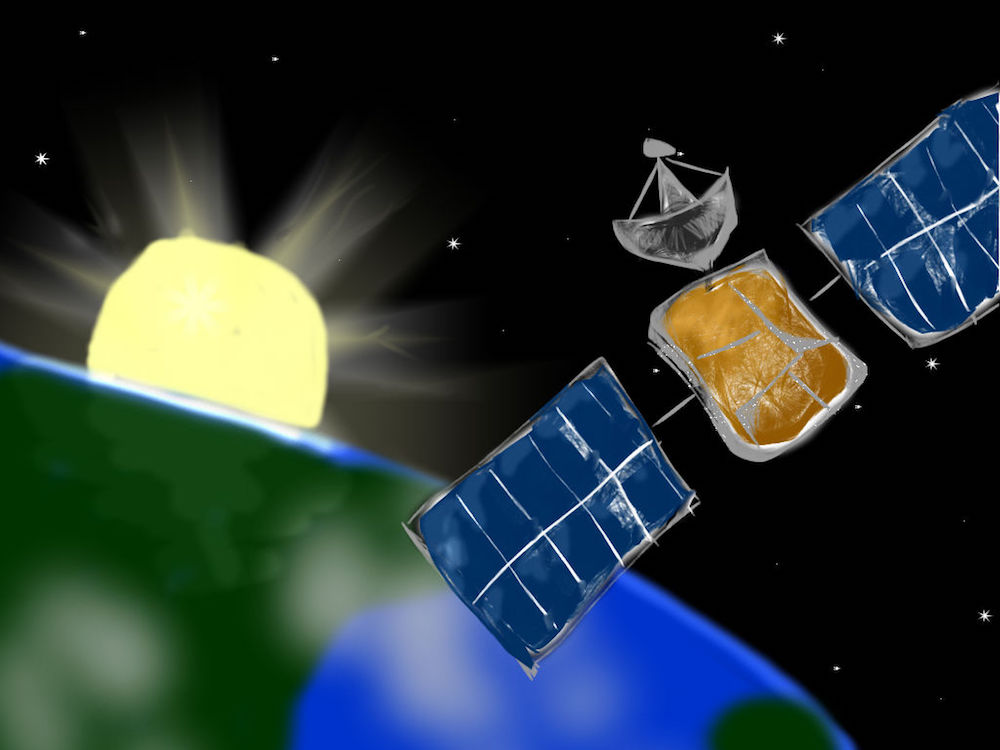
Illustration of a satellite in outer space.
This satellite-based network could send information between Earth and space and distribute it globally. By working in conjunction with existing networks, IoS technology can even increase our data transfer capabilities. This is a key benefit due to the consistent increase in the amount of devices that can share data (such as IoT devices) as well as the amount of data they are sharing, causing a strain on existing communications networks.
In recent years, technological advancements have facilitated the development of IoS technology. For instance, satellite deployment costs have dropped and there have been advancements in phased array technology and microsatellites.
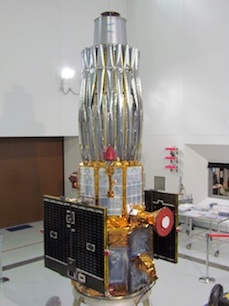
The Tactical Satellite-4 (TacSat-4) is one example of an improved satellite that can send real-time data collected in space to Earth (left). Animation showing how the antenna on this satellite opens in an “umbrella-like” fashion (right). Left image in the public domain in the United States, via Wikimedia Commons. Right animation is by NASA/JPL-Caltech and is in the public domain via Wikimedia Commons.
However, before IoS technology can be fully realized, there are a few more hurdles to overcome.
The Optimal Antenna Design for IoS
One step toward a commercially viable IoS is to improve the design of antennas, such as dish and inflatable satellite antennas, by minimizing their size and weight, while ensuring that they retain their ability to send signals into orbit. To achieve this feat, engineers must ensure that their antenna designs maintain a specific radiation pattern that allows for accurate and long-distance satellite communication (SatCom).
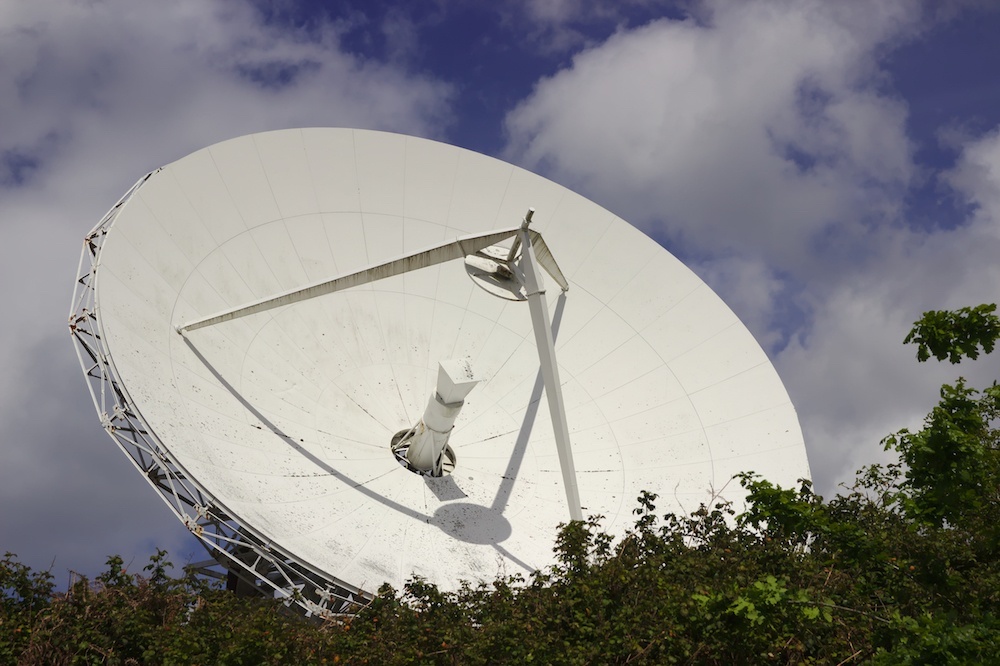
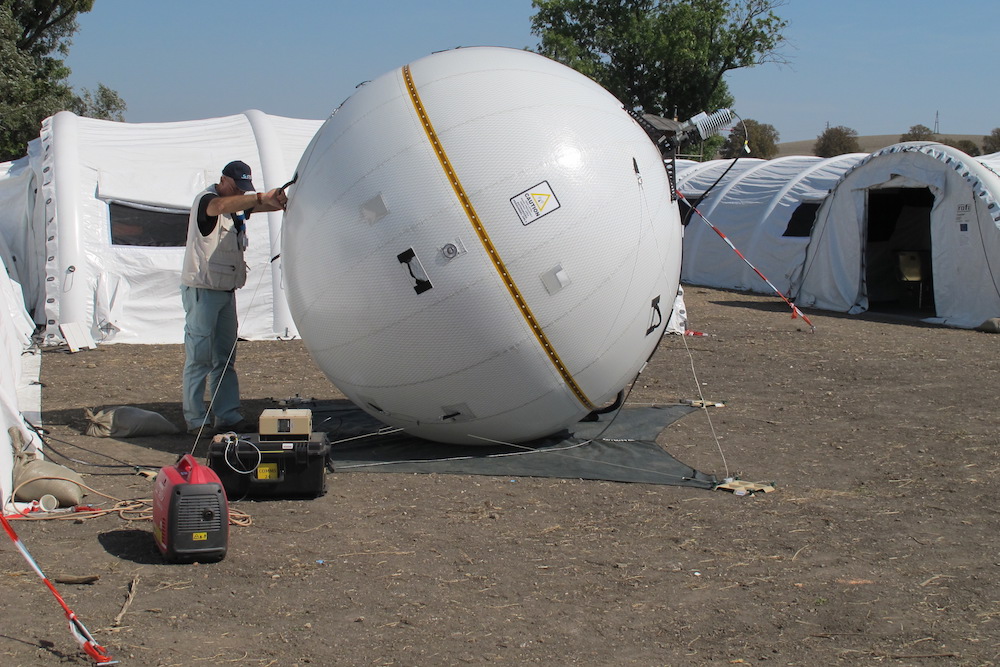
Two types of antennas that can be used for IoS are dish antennas (left) and inflatable satellite communications antennas (right). While dish antennas work well for this application, they have a limited portability. In cases where antennas need to be more easily deployed and moved, IoS technology can rely on inflatable satellite antennas. Left image by Julie Missbutterflies — Own work. Licensed under CC BY 2.0, via Flickr Creative Commons. Right image by The Official CTBTO Photostream — Own work. Licensed under CC BY 2.0, via Wikimedia Commons.
To understand what type of radiation pattern is needed for IoS applications, picture yourself in a kitchen far from the depths of outer space. You are handed a ball of dough and tasked with making it as long as possible. You work the dough into a long, thin “noodle” that can cover the longest distance before breaking apart.
Similarly, to send signals into space, we need to generate a radiation pattern that can be visualized as a thin and sharp noodle- or needle-like shape. The ideal radiation pattern uses a minimal amount of electromagnetic energy to efficiently communicate with satellites in orbit.
Animation showing an example of dish reflector excitation by a circular horn antenna and its response for SatCom applications (created with the COMSOL Multiphysics® software and add-on RF Module). The generated far-field radiation pattern looks like a needle.
Analyzing Antenna Designs with 2D Axisymmetric Modeling
Simulating dish or parabolic reflector antennas is notoriously difficult and computationally expensive due to their large size. In addition, dish antennas, inflatable satellite antennas, and devices like the aforementioned TacSat-4 satellite are are all axisymmetric. To efficiently model these antennas, you can use 2D axisymmetric modeling, a technique available in the RF Module, an add-on product to the COMSOL Multiphysics software. As compared to a full 3D analysis, using 2D axisymmetry is very fast and greatly reduces the size of your model.
The tutorial we discuss here uses 2D axisymmetry to model a parabolic reflector antenna with a radius larger than 20 wavelengths. In this example, you can use the 2D axisymmetric formulation of the electromagnetic wave equation to simulate the antenna. Both the axial feed circular horn and parabolic reflector antenna are solids of revolution.
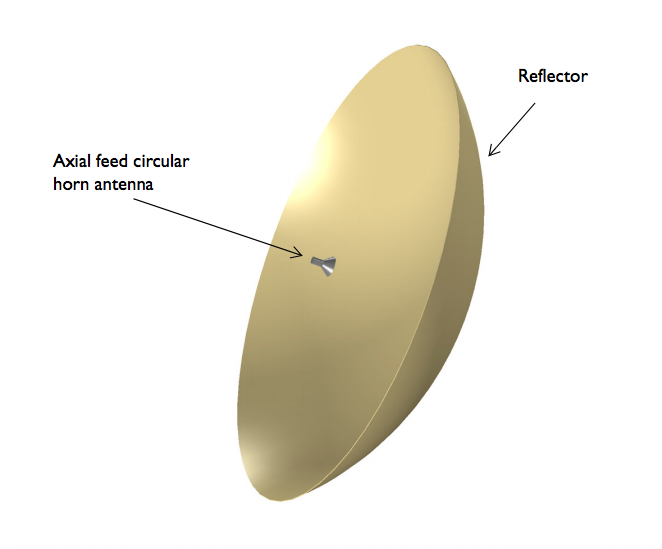
A 3D model of a parabolic reflector antenna.
This technique enables you to easily predict the electric field norm of the antenna as well as the direction and relative magnitude of power flow. It’s also possible to evaluate the antenna’s 3D far-field radiation pattern. As you can see below, these results show that the antenna generates a very sharp and high-gain radiation pattern, like the sharp “needle” shape that is optimal for IoS technology.
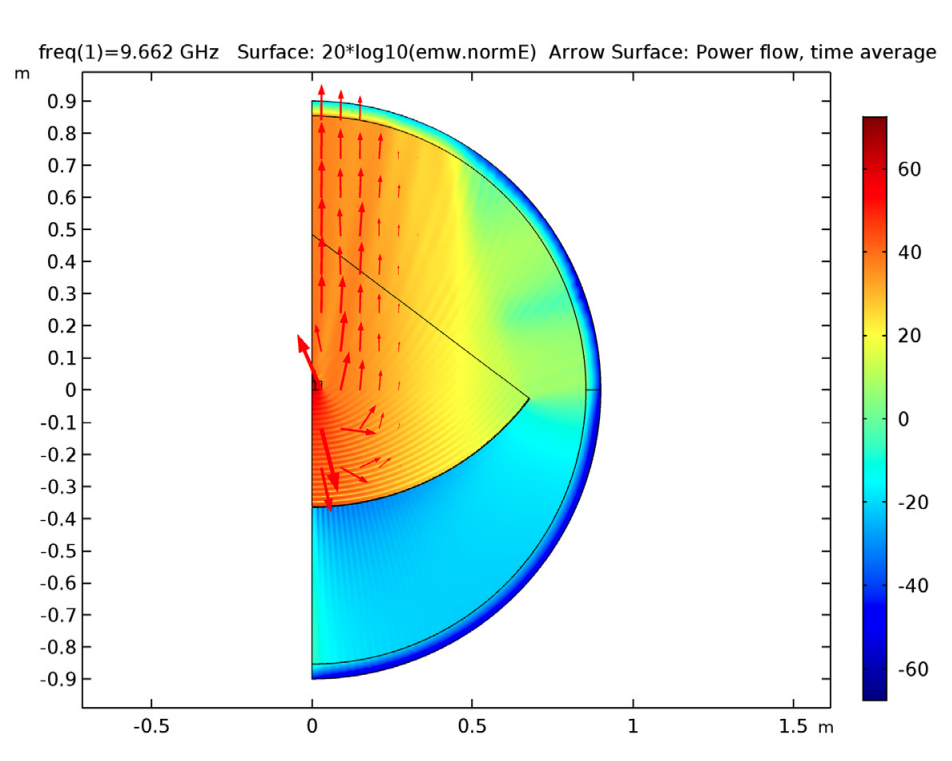
The electric field norm and power flow.
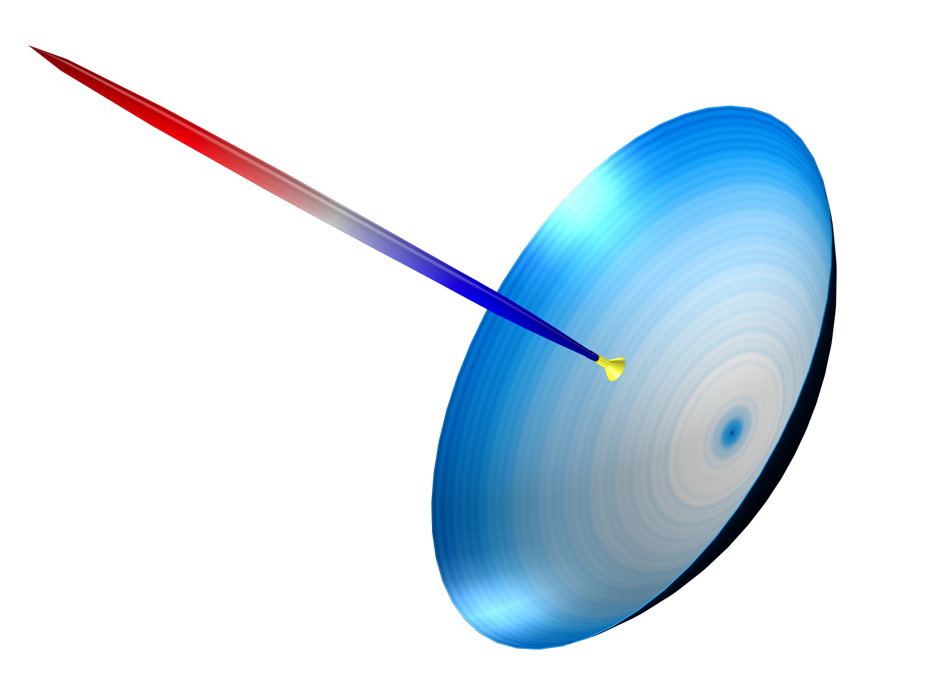
The very sharp far-field radiation pattern.
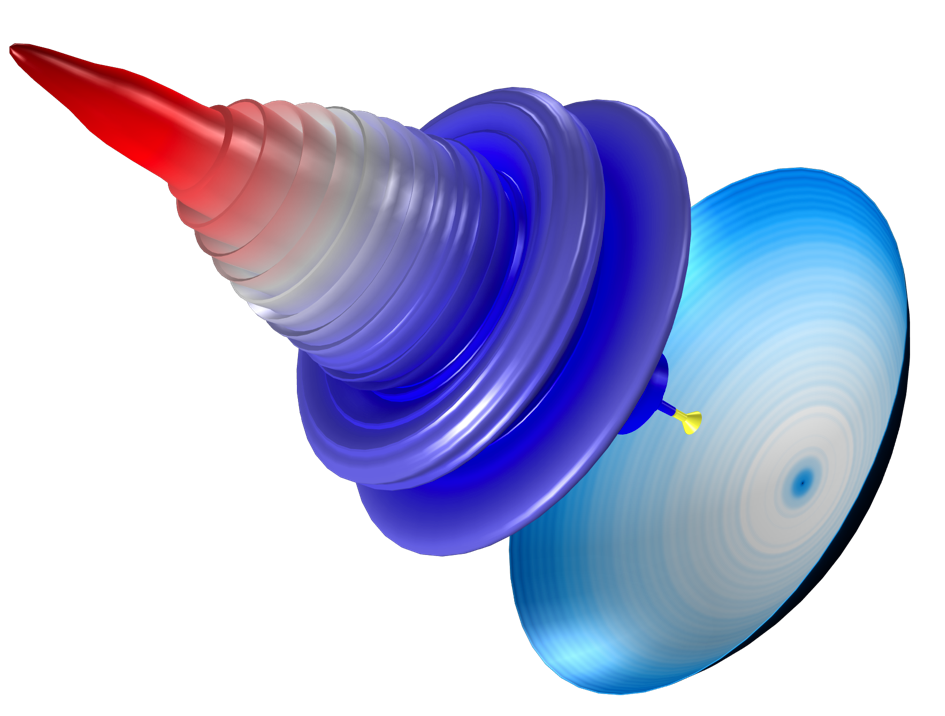
A plot with the dB scale to characterize sidelobes.
Simulations like these can help engineers improve antenna designs to create devices that advance IoS technology, connecting us all to the future.



Comments (0)